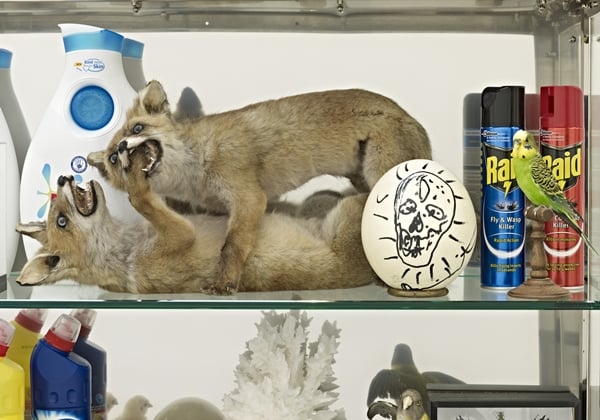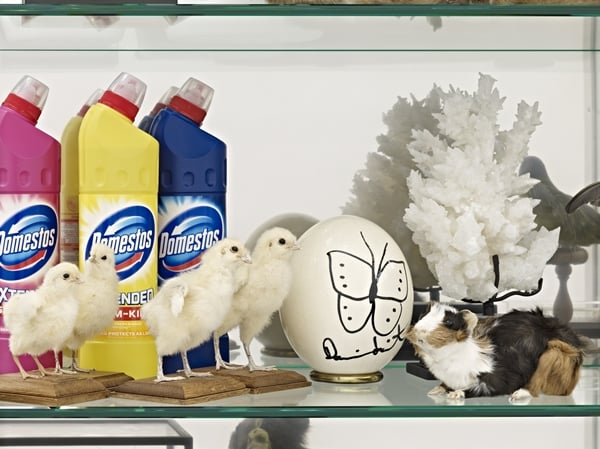Art & Exhibitions
Damien Hirst Creates Wunderkammer for Luxe Taxidermy House

Photo: by Prudence Cuming Associates © Damien Hirst/Science Ltd., All rights reserved DACS 2014.

Eileen Kinsella


Signification (Hope, Immortality and Death in Paris, Now and Then) (2014).
Photographed by Prudence Cuming Associates © Damien Hirst/Science Ltd., All rights reserved DACS 2014.
In what sounds like an art and science marriage made in heaven, Damien Hirst’s latest artwork, a Wunderkammer or so-called “cabinet of curiosities,” was created in partnership with French taxidermy and natural science boutique Deyrolle. The work, titled Signification (Hope, Immortality and Death in Paris, Now and Then) (2014), mixes some of Hirst’s recurring themes—butterflies and skulls—with objects like cans of bug spray and cleaning fluid. It has gone on display at Deyrolle in Paris (through October 28) just in time for Paris Fashion Week, the New York Times‘s T Magazine reports.
According to information on Hirst’s website, the collaboration “adds Hirst to the rich lineage of artists who have worked with and been inspired by Deyrolle since its founding in 1831, from Salvador Dalí and Jean Dubuffet to contemporary artists such as Huang Yong Ping and Mark Dion.”

Detail of Damien Hirst, Signification (Hope, Immortality and Death in Paris, Now and Then) (2014).
Photo: by Prudence Cuming Associates © Damien Hirst/Science Ltd., All rights reserved DACS 2014.
The historical tradition of the Wunderkammer, dates back to the 16th century and this work fuses Hirst’s signature cabinets (typically filled with bottles of medicine or individual pills) with his exploration of themes regarding nature and science, art and beauty, and life and death. According to a comment from Hirst: “I love natural history and have since my first visit at age five to the City Museum in Leeds—it’s the immediate visual impact of it, the wonder, you just can’t help to go ‘Wow.'” Hirst added that curiosity cabinets have long been a fascination for him because “they inhabit a space between life and death that says so much about us as humans, and who we might want to be.”
Hirst described the opportunity to use Deyrolle’s “incredible” collection as “amazing.” And indeed, Deyrolle, which we admit we have never heard of before, has a fascinating story in its own right. Founded in 1831, it had amassed a collection of taxidermy, minerals, fossils, shells, coral, and entomology as well as a library of natural sciences books and prints over the years. In 2001, Prince Louis Albert de Broglie purchased the shop as it teetered on the verge of bankruptcy and restored it “to financial health,” a release from Paddle8 states. In 2008 it was struck by a devastating fire, following which it was “completely refurbished” with the help of Broglie and support from the art and fashion communities. Broglie is now focused on the company’s mission of explaining biodiversity and learning and teaching through the observation of nature.

Detail of Damien Hirst, Signification (Hope, Immortality and Death in Paris, Now and Then) (2014).
Photo: by Prudence Cuming Associates © Damien Hirst/Science Ltd., All rights reserved DACS 2014.
The cabinet itself and 50 items represented in it—mounted individually on plinths and bearing Hirst’s signature—will be sold via online auctioneer Paddle8 next month (October 14–28), with proceeds earmarked for Hirst’s charity “Victim,” as well as for Deyrolle’s programs for natural science education and conservation.